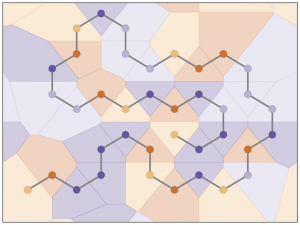M. Khawaja, A. P. Sutton and A. A. Mostofi, Molecular simulation of gas solubility in nitrile butadiene rubber, J. Phys. Chem. B 121, 287 (2017).
N. Molinari, M. Khawaja, A. P. Sutton and A. A. Mostofi, A molecular model for HNBR with tunable cross-link density,
J. Phys. Chem. B 120, 12700 (2016).
Nitrile butadiene rubber (NBR) and it’s hydrogenated relative HNBR are among the most widely used elastomers in the oil and gas industry where they are used to seal components in high temperature and pressure environments. Such seals can suffer permeation-driven failure as a result of absorption of gases that cause swelling and performance degradation.
In a pair of papers that have appeared recently in the Journal of Physical Chemistry B, PhD students Mohammed (Musab) Khawaja and Nicola Molinari have developed and used chemically-specific all-atom models of NBR and HNBR to study the properties of these elastomers. In the first paper, Musab studied the solubility of several gases known to be responsible for permeation-driven failure in NBR and found two key results: (1) that the presence of a particular chemical group (C-N cyano groups) in the polymer have a marked impact on the solubility of carbon dioxide and water; and (2) that at elevated pressures and temperatures such as those experienced in oil wells, the relative solubilities of different gases are likely to be different as compared to ambient conditions. These findings have implications for the chemical design of such elastomers for use at elevated temperature and pressure.
In the second paper, Nicola Molinari developed and tested all-atom model of HNBR that mimics the experimental process by which HNBR is produced from NBR by hydrogenation and cross-linking. In Nicola’s model, the degree of cross-linking is a tunable parameter that can be used to control some of its properties. This model paves the way for future studies of properties of HNBR, such as the solubility and diffusion of gas molecules, that are determined by chemically-specific interactions.
This work was supported by Baker Hughes. Mohammed Khawaja and Nicola Molinari are PhD students in the Centre for Doctoral Training in Theory and Simulation of Materials and they are supervised by Adrian Sutton and Arash Mostofi.
